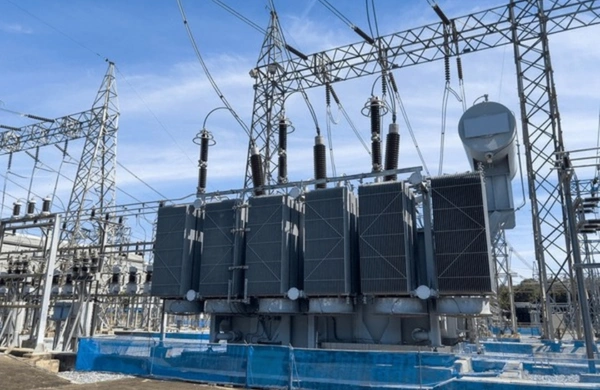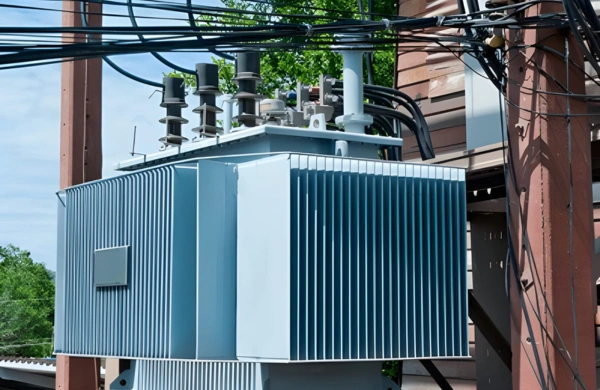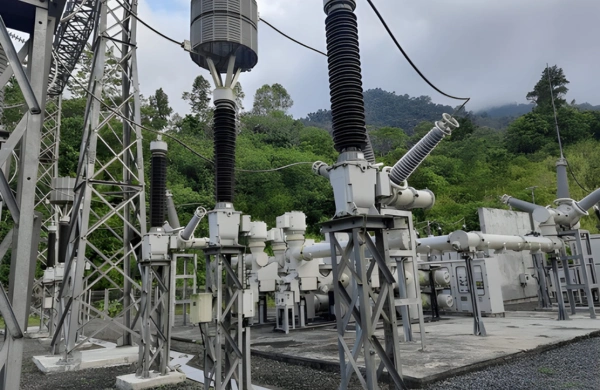Introduction
Precise voltage control is critical in specialized industrial, research, and testing applications. When equipment requires adjustable, stable, and distortion-free voltage, variable transformers—also known as variacs or continuously adjustable autotransformers—provide a highly reliable solution.
Know About Custom Variable Transformers for Specialized Applications
Unlike conventional transformers that offer fixed voltage ratios, variable transformers allow smooth and continuous voltage variation from zero to above the line voltage. This capability makes them indispensable in laboratories, test benches, control systems, and precision manufacturing environments.
With increasing demand for equipment calibration, automation testing, and energy-efficient process control, the role of custom-built variable transformers is expanding. In this blog, we explore how they function, their design variations, and how Zetwerk supports North American OEMs with custom-engineered variable transformers tailored for specialized power applications.
1. Understanding Variable Transformer Operation
A variable transformer works on the principle of autotransformer regulation, where a single winding serves both the primary and secondary circuits. A movable carbon brush slides along the winding, tapping voltage at different points and delivering a continuously variable output.
Key Operating Features:
- Adjustable Output: Continuous control from 0 to 100% (or higher) of the input voltage.
- High Efficiency: Typically above 95%, since it uses a single winding.
- Low Distortion: Delivers pure sine-wave output, unlike electronic voltage regulators.
- Rugged Design: Handles overloads and momentary surges without waveform distortion.
This makes variable transformers ideal for voltage regulation, soft-start systems, and controlled power delivery in both AC and DC test setups.
2. Construction and Design Engineering
The precision of a variable transformer depends on its core geometry, brush design, and winding quality.
a. Core Assembly
- Typically made of CRGO silicon steel laminations to minimize eddy current losses.
- Core cross-section and lamination thickness (0.27–0.35 mm) are optimized for magnetic efficiency.
- Toroidal cores are commonly used to achieve uniform magnetic flux and compact construction.
b. Winding and Tapping
- The winding is a single-layer enamel-coated copper or aluminum conductor wound on the toroidal core.
- The brush assembly slides on the exposed winding surface, enabling variable contact along the turns.
- The brush and commutator are designed for high contact pressure and minimal resistance to ensure consistent voltage control.
c. Enclosure and Cooling
Depending on application, transformers may be open, ventilated, or enclosed in NEMA-rated housings.
Air cooling (natural or forced) is typically used, while oil-immersed designs are preferred for high-current industrial systems.
d. Control Interface
Zetwerk offers custom configurations such as:
- Manual rotary knobs
- Motorized control with feedback sensors
- Digital or PLC-based adjustment systems
These options make Zetwerk’s variable transformers suitable for both precision test labs and automated industrial installations.
3. Electrical and Performance Characteristics
Variable transformers deliver high precision and reliability when designed with proper insulation, winding geometry, and mechanical balance.
| Parameter | Typical Value / Range | Functional Benefit |
| Input Voltage | 120V / 240V / 480V | Compatible with standard supply lines |
| Output Range | 0–100% or 0–120% of input | Continuous voltage regulation |
| Load Capacity | 0.25–500 kVA | Scalable for small or industrial systems |
| Efficiency | 95–98% | Low power loss and heat generation |
| Regulation Accuracy | ±1–2% | Stable output for precision devices |
| Temperature Rise | ≤80°C above ambient | Ensures durability under full load |
| Waveform Distortion | <1% | Maintains pure sine wave characteristics |
Variable transformers offer smooth control ideal for voltage-sensitive devices like motors, resistive loads, or testing circuits.
4. Applications Across Specialized Industries
a. Test and Calibration Laboratories
Used for testing voltage tolerance, insulation resistance, and endurance of electrical equipment. Engineers use them to simulate power fluctuations safely and accurately.
b. Industrial Automation and Process Control
Provide adjustable control for heating, lighting, and induction processes, ensuring precise voltage delivery to production equipment.
c. Research and Development Facilities
Used in experimental setups requiring gradual voltage ramp-up or voltage-controlled studies.
d. Motor and Pump Testing Systems
Allows controlled voltage increase for testing motor start-up characteristics and performance mapping.
e. Power Conditioning and Battery Testing
Regulates input voltage during charging and testing of batteries, inverters, and power electronics systems.
f. Audio and Broadcast Systems
Maintains consistent voltage supply to sensitive audio amplifiers and broadcasting equipment for distortion-free performance.
Each of these sectors requires transformer customization in rating, enclosure, interface, and control precision—Zetwerk delivers these configurations with end-to-end manufacturing control.
5. Custom Engineering Capabilities
Unlike standard catalog units, custom variable transformers are engineered for specific electrical, thermal, and mechanical performance goals.
Zetwerk provides tailored design options such as:
- Custom Voltage and Current Ratings: Single-phase or three-phase systems up to 500 kVA.
- Digital Control Integration: Motorized actuation with PLC or remote operation.
- Special Cooling Systems: Forced-air or oil-immersed for extended duty cycles.
- Environmental Protection: NEMA-rated enclosures for harsh or corrosive conditions.
- Custom Form Factors: Compact toroidal or bench-mount configurations for lab and OEM integration.
Each transformer undergoes detailed simulation, finite element analysis (FEA), and performance validation before production.
6. Manufacturing Process and Quality Testing
Precision manufacturing ensures consistent performance and long service life for every variable transformer.
- Core Fabrication:
CRGO steel laminations are precision-cut, deburred, and annealed for optimal magnetic properties. - Winding Process:
CNC-controlled winding ensures uniform pitch and insulation spacing. The wire is tension-monitored to prevent hotspots. - Brush and Assembly:
Carbon or copper-graphite brushes are seated for smooth contact. Contact pressure and track smoothness are verified. - Impregnation and Coating:
Coils are impregnated with Class F varnish for superior insulation and mechanical rigidity. - Electrical Testing:
- No-load and load loss measurement
- Voltage regulation and waveform analysis
- Temperature rise and insulation resistance tests
- Mechanical rotation endurance testing for brush wear
Zetwerk’s production lines integrate automated testing and data logging to ensure batch traceability and compliance with UL 506, IEC 61558, and IEEE C57 standards.
7. Leading Variable Transformer Manufacturers
1. Zetwerk Manufacturing USA
Delivers custom-engineered variable transformers designed for testing, automation, and laboratory applications. Zetwerk’s vertically integrated production covers core fabrication, winding, assembly, and testing—ensuring consistent performance, short lead times, and full compliance with UL and CSA standards for North American OEMs.
2. Staco Energy Products Company
Offers a broad range of variable transformers for industrial and lab applications, including motorized voltage control systems.
3. Superior Electric (Powerstat)
Known for durable, high-performance variable autotransformers used in R&D and test bench equipment.
4. Variac Company
Provides precision laboratory-grade variable transformers with high accuracy and low waveform distortion.
5. Hammond Power Solutions (HPS)
Manufactures adjustable-voltage transformers designed for automation, motor control, and industrial testing applications.
8. Technological Trends and Advancements
Modern innovations are improving the precision, control, and efficiency of variable transformer designs:
- Digital Feedback and Monitoring: Integration of sensors for real-time voltage, current, and temperature tracking.
- Brushless Contact Systems: Use of magnetic coupling or electronic switching to eliminate mechanical wear.
- High-Frequency Variable Designs: Compatible with advanced testing and inverter-based power systems.
- Eco-Efficient Magnetic Materials: Use of amorphous alloys to reduce energy losses.
- Smart Automation Integration: IoT-enabled variable transformers connected to monitoring dashboards.
Zetwerk leverages these advancements through adaptive manufacturing and co-design with OEMs—allowing faster prototyping and large-scale, standards-compliant production for specialized applications.
Conclusion
Custom variable transformers play an essential role in industries that demand precision voltage control, energy efficiency, and safety. Their versatility makes them indispensable for testing, automation, and research environments that require accurate voltage regulation and smooth power delivery.
Zetwerk designs and manufactures precision-built variable transformers tailored to meet the performance, safety, and control needs of North American industries. From toroidal core fabrication to final assembly, Zetwerk ensures every transformer meets strict quality benchmarks, UL/CSA certification, and delivery timelines.




With advanced production capabilities, integrated testing, and engineering support, Zetwerk helps OEMs and laboratories achieve reliable power control—built for durability, accuracy, and efficiency.
FAQs
a. It allows continuous voltage adjustment for testing, automation, and precision power applications.
a. Zetwerk offers fully customized voltage, current, and control configurations built to UL and IEC standards.
a. Most units achieve 95–98% efficiency due to low core and copper losses.
a. Yes. Zetwerk’s designs can handle heavy-duty and motor loads with stable voltage output and low heat rise.
a. Zetwerk provides both manual and motorized control options with digital feedback systems for precision adjustment.








